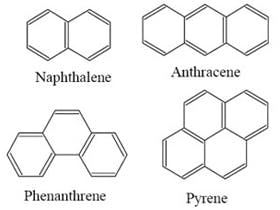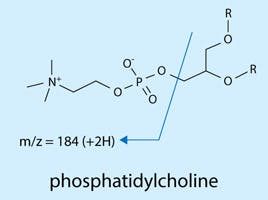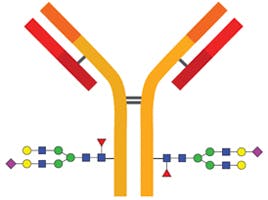
07 Nov 2019
The role of HPLC in analysing AAV gene therapy vectors

Gene therapy products exploit the biology of viruses, transferring the genetic sequences from a therapeutic into targeted cells.1 Viral vectors are tools commonly used in genetics as they enable the movement of genetic material inside cells in a process called transduction; the infected cells are described as transduced.1 Once a genetic sequence is transduced, the therapeutic is expressed by the cell from the gene. Within this framework, there are two key strategies: ex vivo and in vivo. Ex vivo involves the removal and transduction of defective cells from the patient, before being reintroduced, whereas in vivo sees this process happening without cell removal.1
The first approved gene therapy clinical research involved the ex vivo methodology. It took place in the USA in 1990, at the National Institute of Health.2 The treatment involved a four-year-old girl who suffered from a genetic disease, adenosine deaminase (ADA) deficiency, which left her with a severe immune system deficiency.2 White blood cells were taken from her and corrected with normal genes for making adenosine deaminase. They were then reintroduced, effectively repairing the patient’s defective cells.
In vivo involves the introduction of genetic material directly into a patient’s cells. To make this therapy possible, a highly specific vector is needed to avoid delivery to undesired cells and tissues, as this risks an immune response. Since adeno associated virus (AAV) can be targeted to specific tissue types it has become a focus for this type of gene therapy.
It’s not simple, however, and the development of AAV gene therapy faces a number of challenges. HPLC can play a part in alleviating these challenges through characterisation.
AAV as a vector for gene therapy
Jesse Gelsinger was the first person to die in a clinical trial of gene therapy.3 The investigation into his death suggested that previous infection with adenovirus had caused a supercharged immune reaction towards the adenovirus gene therapy vector. With this discovery, future research turned towards gene-delivery vehicles which patients would be unlikely to have an immune reaction towards. AAV was identified as the answer and quickly became the focus for development.3
Many different variants of the virus exist that have different tissue specificity within the body; for example, some will penetrate cardiac tissue more efficiently compared to others that may penetrate the brain.3 The difference in tissue selectivity is conferred by variations in the proteins that form the capsid coat of the virus. Worldwide, this vector is being used in more than 200 ongoing clinical studies to treat a wide variety of diseases and disorders and this year the FDA approved the first AAV gene therapy (Zolgensma) for a lethal disorder of spinal muscular atrophy.3,4
AAV is very promising and prevalent in the most commonly used platforms for gene delivery in preclinical and clinical studies.4,5 However, the potential of AAV gene therapy is limited by several factors. It’s small, meaning the size of therapeutic gene it can deliver is limited. Also, despite the initial thoughts, the virus was minimally immunogenic—anti-AAV neutralising antibodies have been found in the general population and the AAV capsid proteins themselves can be immunogenic in some cases.4 Producing a large supply can prove difficult which is exacerbated by the requirement for a large dose of highly purified vector for treatment.
There are plenty of challenges facing AAV gene therapy. In addition, the past failures in gene therapies highlight the requirement for stringent characterisation of these products before progressing to clinical trials.
Characterising AAV vectors
In the virus genome, it is the cap and rep genes that control capsid production and gene replication, respectively. These genes are removed from gene therapy vectors so the virus cannot replicate when its in human cells.5 Although this is necessary for safety, it also presents a challenge producing the therapeutic. Since the virus can usually only replicate in the presence of another virus, “helper” genes are also needed during production. There are several methods employed to do this but each can lead to considerable heterogeneity within preparations.5 Due to the co-expression of these genes and the viral assembly process, rAAV (recombinant AAV) can be produced that lack any genetic material. There is also the risk of the encapsulation of non-desirable genetic material, such as viral genes, which is risky if present in the final therapeutic.5
The testing requirements for assessing the safety and purity of these gene therapy products are still being established but some of the main parameters are listed in Table 1. Clearly, with the increase in AAV vectors entering clinical trials there is a need to develop robust QC assays to distinguish between different viral variants and ensure consistent production of these therapies. The discussion below focuses on the role of HPLC in the analysis of AAV samples for gene therapy.

Table 1 Testing requirements for AAV-Based products (adapted from Pharmacology of Recombinant Adeno-associated Virus Production, Budloo et al, Methods & Clinical Development, 2018)
There are many impurities introduced into the AAV sample during the purification process that need to be carefully monitored using HPLC.5 For example, Iodixanol is often used for density gradient purification of AAV.4 Iodixanol is an iodinated density gradient originally used as an X-ray contrast compound for clinical use. Unlike other compounds used to generate gradients for fractionalisation, iodixanol solutions are non-ionic and inert, so fractions of AAV can be used directly in electrophoretic analysis and viral infectivity assays.4 However, iodixanol is one of many residual reagents that are important quality attributes to monitor in the final AAV vector sample. While there is already a USP monograph for the quantification of iodixanol6 (and other residual impurities); the role of HPLC in other areas of AAV analysis is still evolving.
Vector capsid purity and identity
The AAV capsid is composed of 3 proteins, VP1, VP2, and VP3.5 Traditionally, sodium dodecyl sulfate-polyacrylamide gel electrophoresis (SDS-PAGE) has been used to analyse the purity of these proteins within a viral sample.7 This method involves denaturing the proteins in the presence of SDS. The SDS binds to the proteins and results in a negative charge that is proportional to the chain length. The proteins can then be separated based on charge in the polyacrylamide gel, where an electrical current is applied. Although this is a traditional technique, quantitation is often an unreliable and resource-intensive process.7 Since reverse phase liquid chromatography (RPLC) is also a denaturing method it is well suited to replace this method for the analysis of protein purity for viral vectors. Good method development can produce chromatography that is much more reproducible and allows robust quantification.7 In addition, RPLC is generally cheaper and directly amenable to on-line mass spectrometry (MS) for the identification of capsid proteins and impurities.
Alongside achieving capsid purity, it is important to characterise the capsid identity to ensure the correct vector has been produced. Traditionally, SDS-PAGE would be combined with western blotting, where an antibody that binds to an epitope in each of the viral proteins is used to identify each band in the SDS-PAGE.7 Again, this is time-consuming and RPLC can provide much more reliable quantitative techniques. The use of peptide mapping can also be used to pick up on variations in the protein sequence that would not be recognised by an antibody-based assay.
Empty/full capsids analysis
During the production of viral vectors, there will be a population of viral particles produced that has failed to package the vector DNA (Figure 1). These empty capsids will represent varying proportions of the crude harvest for rAAV preparations.5 Incomplete encapsulation can also occur, leading to capsids containing truncated genomes or incorrect DNA (i.e. from plasmids, cells, or helper viruses).5 Given the history of problems with immune system responses to gene therapy vectors, it is important to reduce the sources of unnecessary, potentially antigenic material, that could elicit an unwanted immune response.2 Although the impact of these species is not fully understood, they are undesirable and, thus, a carefully regulated quality attribute.5
One challenge for analysing empty/full capsid vectors is that the DNA is protected by the capsid shell. There is little change in shape/size between empty, full ,and partially full capsid particles. Therefore, the ratio of empty to full capsids is an important attribute to monitor in viral vector preparations. Regulatory requirements in this area are still being established and there is interest in developing traditional HPLC methods for this purpose. Current methods to evaluate the capsids are transmission electron microscopy (TEM) and analytical ultracentrifugation (AUC).7 Cryogenic TEM involves a sample vitrified by rapid freezing to preserve the structure of a biological specimen. When imaged, there is a clear morphological distinction between packed and empty particles.7 Since the empty capsids have a different density and/or mass to the correctly packaged particles they can be separated under centrifugal force. AUC is a tool to distinguish and quantify different AAV species either by mass (sedimentation velocity) or density (sedimentation equilibrium). Innovations in AUC mean it is now possible to monitor multiple wavelengths of absorbance to properly quantify both genomic DNA and viral capsid content in a single experiment. The main advantage of this technique is that it is reproducible, can quantify viral particles in the formulation buffer (no sample preparation), works independently of the AAV variant (or the size of the transgene), and requires no standard comparison.7

Figure 1: example of different capsid assemblies produced during AAV vector manufacturing
HPLC has a role in the characterisation of capsid particles. Conformational changes occur to the capsid proteins during encapsulation of the DNA that causes a change in the overall surface charge on the capsid particle.5 Efforts are made to utilise this physiochemical difference between empty/full capsids to develop analytical HPLC methods ion exchange, though it is difficult to establish one optimal method for all rAAV variants because their capsid physiochemical properties differ. This has led to some success since AAV is relatively small for a virus (20-25 nm) making it amenable to both traditional and monolithic columns. Monolithic columns are sometimes preferred when dealing with very large viruses and biomolecules as there is less risk of clogging, higher flow rates, and fewer shear forces.8 However, with a careful choice of column, there is no reason traditional ion-exchange chromatography cannot be used to analyse AAV particles on an analytical scale. Furthermore, different column dimensions and chemistry is useful during method development to try and maximise resolution for different variants. Viral particles are sensitive to their environment, for example, capsid uncoating is common at high temperatures; therefore, it may be important to cross-validate ion exchange results with TEM or AUC. Assuming accurate results are attained, ion exchange HPLC could provide a cheap, easy, and high-throughput method of monitoring capsid assembles.
Aggregation analysis
Due to the immunogenicity of aggregates, characterisation is a critical quality attribute for gene therapy vectors, as it is for any biological therapeutic. Aggregates can vary greatly from nm (subvisible) to mm (visible) in diameter and their formation during production, storage, and shipment can be caused by numerous factors.7 One method alone can’t cover the large size range needed, but we can combine different techniques to evaluate the level of aggregates in a sample. This ranges from basic techniques such as a visual inspection to methods such as dynamic light scattering (DLS), AUC, size exclusion chromatography (SEC), TEM, and field-flow fractionation with multi-angle static light scattering (FFF-MALS).7
SEC is particularly attractive for aggregate analysis because it is inexpensive to quantify aggregates in a high-throughput manner.7 SEC is unusual compared to other chromatography techniques due to absence of a retentive mechanism. However, secondary analyte/stationary phase interactions can occur as a result of surface silanol species or hydrophobic Interactions.9 Secondary interactions between an analyte and the column are troublesome for SEC analysis as they can give rise to poor peak shape, resolution and recovery. When dealing with large biomolecules, choosing the right column chemistry and mobile phase conditions is particularly important during method development. Secondary interactions, temperature and the SEC column itself could impact the amount of aggregate observed.9 However, using complementary techniques such as AUC should provide confidence in the results generated from SEC analysis, and the additional biophysical information it generates supports the production and process development.
Conclusions
This article has outlined some of the issues facing AAV as a gene therapy vector and some of the different safety and quality attributes that need to be considered during product development. AAV testing poses challenges since the parameters for what makes a cell and gene therapy product safe for patients are still emerging. As experts in chromatography, Element can provide support with all aspects of HPLC method development. We have a wide range of high-quality analytical columns suitable for a broad range of biomolecule applications. If you do need any advice or run into any problems with one of the HPLC methods discussed above, our in-house technical team are always on hand to provide expert advice to our customers.
Get in touch with our technical team ([email protected]) to find out more!
References
1. https://ghr.nlm.nih.gov/primer/therapy/procedures
2. https://history.nih.gov/exhibits/genetics/sect4.htm
3. https://www.sciencehistory.org/distillations/the-death-of-jesse-gelsinger-20-years-later
https://ct.catapult.org.uk/resources/cell-and-gene-therapy-catapult-uk-clinical-trials-database
4. https://www.frontiersin.org/articles/10.3389/fonc.2019.00297/full#h13
5. https://www.sciencedirect.com/science/article/pii/S2329050118300032#fig2
6. http://www.pharmacopeia.cn/v29240/usp29nf24s0_m41760.html
7. https://cellculturedish.com/viral-vector-characterization-analytical-tools/
8. https://www.ncbi.nlm.nih.gov/pmc/articles/PMC4015067/





